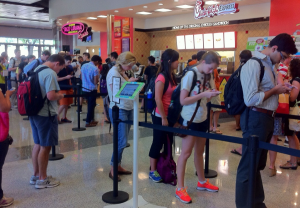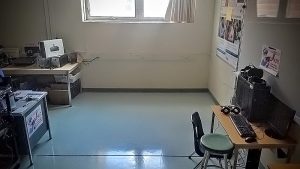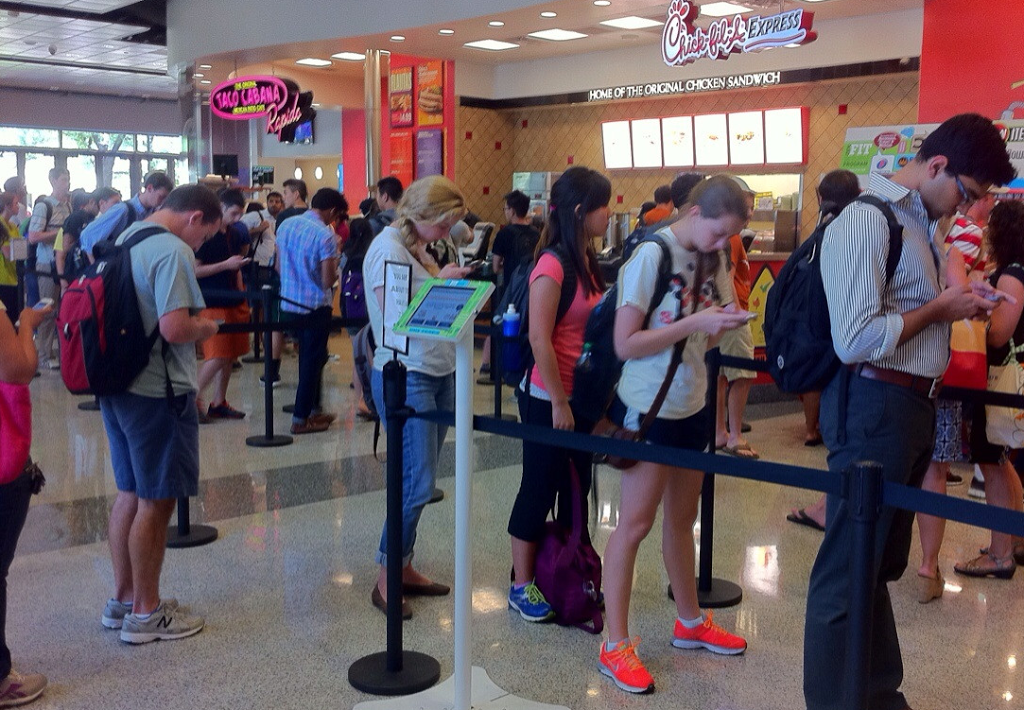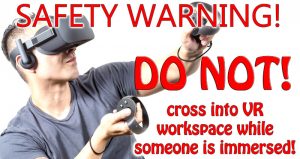 |
| This isn’t the end, it’s just a stage of evolution (an annoying one). |
We quickly get used to the idea that things will always stay the same. For a while there it looked like we’d all be on desktop computers, then laptops became more common and wireless internet matured in response to it. With stable wireless data, computers shrank again and changed form into smartphones. We’re still living in the age of handheld touchscreens but that too is beginning to change, and I’ve been lucky enough to get a glimpse of what’s coming next.
Last year we got some SHSM funding to explore virtual reality in our software engineering class. Students quickly integrated the HTC Vive we got into their software engineering process and were able to turn out 3d environments that they could then explore and perfect in much higher resolution within the immersive VR space. This year we’ve joined Foundry10, a VR research group, and are participating in research into how students react to and assimilate VR into their learning (it’s a powerful tool).
There are moments when technology pivots rather than simply modifying an existing process, and VR feels like one of those moments. The way we design interfaces and software as a whole will have to evolve to meet the demands of VR. Repetitive models and game-play might work on a screen (that kind of game-play itself evolved out of the even more passive watching of television), but it doesn’t work in VR. Immersion demands better everything.
 |
| If you think desktops take up a lot of room in a class, you ain’t seen nothing yet! Don’t cross the tape when someone is immersed in VR! |
I’ve only had the Vive up and running in the classroom for a couple of months, but hundreds of people have passed through it, experiencing VR for the first time, and their response never gets old. The sense of immersion can be quite profound. As you move your head you remain in the digital space, you can’t see past the edges of a screen. At this point your mind does a lot of the heavy lifting, placing you within the elsewhere that you find yourself in a way that no window-like monitor ever could. Students coming out of VR often look like they are awakening from a dream.
VR is the whole shebang, you’re somewhere else. With headphones and goggles on you might forget you’re in a classroom at all (students have). The Vive is heavy, and wired to a powerful desktop PC, so there are limits (now being addressed), but as a first step into a new form of media immersion it raises a lot of interesting questions. A student who reads about D-day might have a minor emotional response to a well written piece on it. That same student watching the opening scenes in Saving Private Ryan will have a more visceral response.
A student in a well made VR simulation of D-day might end up with a virtual form of PTSD. That kind of VR experience doesn’t exist yet, though developers are hard at it and I give them only a couple of years until we’ve re-jigged software development to catch up with the demands of VR. When that happens we will be able to experience history (or fiction) first hand in a visceral way.
The kind of immersion VR offers raises a lot of questions, but it also creates some unique learning opportunities. If you need to grasp 3d scientific principles, like, say, how elements bond in chemistry, a VR headset would be invaluable. If you want to grasp geological concepts in a real world (ie: 3d) context, then a VR headset can place you inside an earthquake. It’s in the softer disciplines, like history or literature, that opinion can creep in. VR, with its sense of immersion and involuntary emotional response, would make a powerful tool for indoctrination.
 |
| Google Glass was a jab into a future we weren’t ready for. Future augmented reality lenses will seamlessly allow us to flit between the real and the digital. |
I, for one, am just happy to see the end of a touchscreen in everyone’s hands period of distraction. In 20 years people looking at smartphones will be a gag everyone laughs at (can you believe we did that?).
Immersive screens don’t just mean alternate realities, they also mean augmented realities. When we aren’t experiencing deep, emotionally powerful virtual experiences, we will be accessing digital information without taking our eyes off the world around us. A digital revolution that is about enhancement and powerful immersion is going to be an educational treasure trove.


